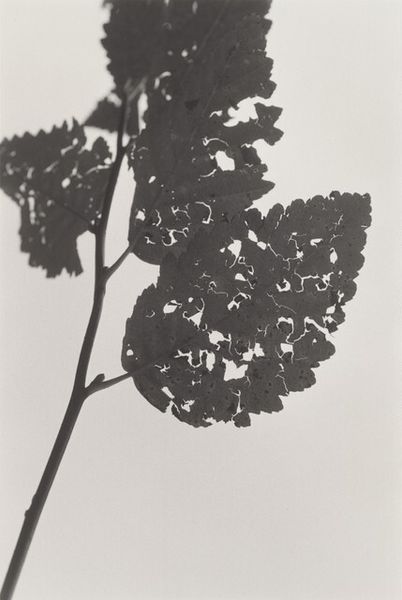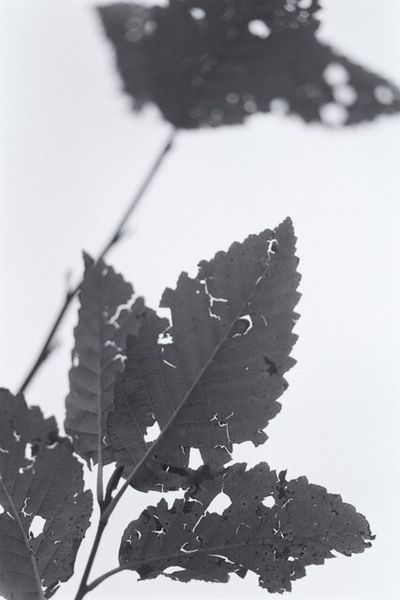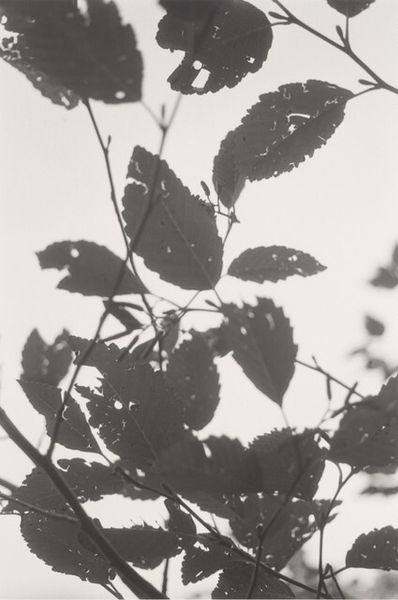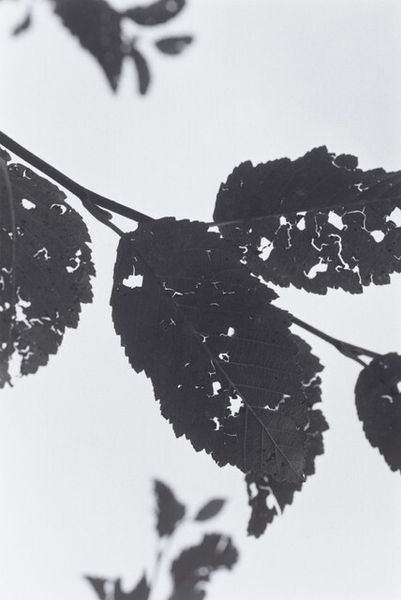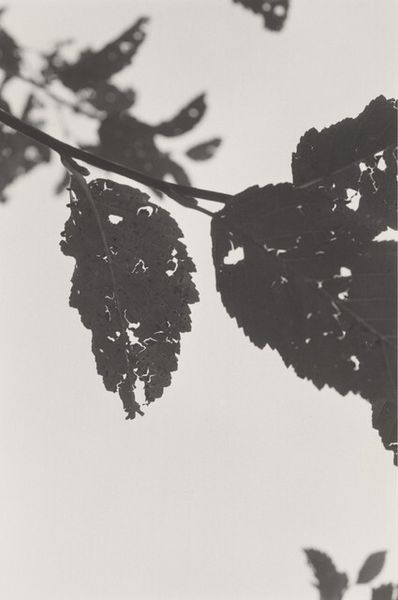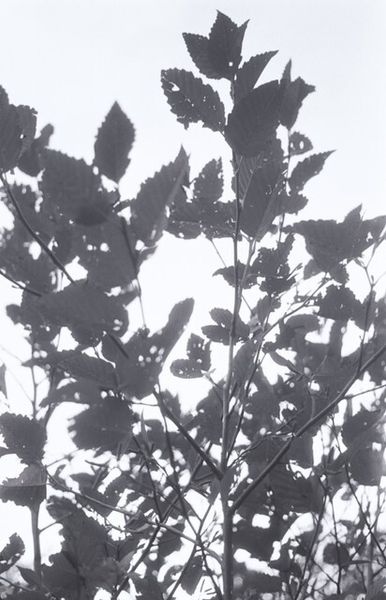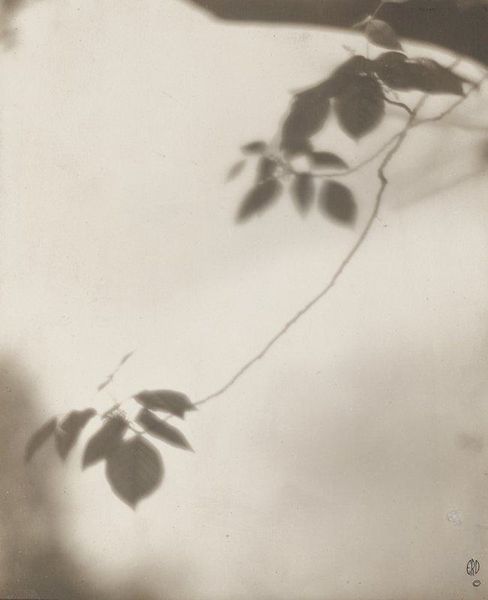
#
organic
#
nutrition
#
natural shape and form
#
natural world styling
#
natural formation
#
organic shape
#
floral photography
#
abstract nature shot
#
food photography
#
flower photography
Dimensions: image: 23 × 15.3 cm (9 1/16 × 6 in.) sheet: 35.4 × 27.8 cm (13 15/16 × 10 15/16 in.)
Copyright: National Gallery of Art: CC0 1.0
Curator: Ah, here we have Robert Adams’s "Neahkahnie Mountain, Oregon," taken in 2004. What catches your eye about it? Editor: There's something incredibly poignant about this photograph. The stark contrast, the intimate scale...it feels like a lament for something lost, or maybe just passing. Curator: A lament... I can see that. The delicate balance of light and shadow lends a certain fragility to these unassuming leaves. But let's consider the context: Adams is known for documenting the changing landscape of the American West. Do you think this work engages with that at all? Editor: Absolutely. Even in this close-up of foliage, there's a conversation happening about our relationship to the environment. These aren’t pristine, untouched leaves; they bear the marks of being consumed and marked. In the age of environmental consciousness, it evokes both loss and endurance. Curator: I like that tension you identify: loss and endurance. I imagine Adams aimed to capture not just the surface beauty of nature, but also its resilience in the face of various threats, maybe even from us. It brings to mind questions about access to resources, especially regarding class. How the lower classes have traditionally related with nature. Editor: Exactly. Think about Neahkahnie Mountain, Oregon: who has access to that landscape, both physically and economically? How do their interactions shape it, and how does it shape them in return? Adams urges us to ponder who profits from those ecosystems and at whose expense? Curator: It all resonates beyond the merely pretty, then. Something as seemingly small as a few weathered leaves becomes a portal into wider narratives. Editor: In Robert Adams's “Neahkahnie Mountain, Oregon,” a humble study prompts questions of human access to landscape, and economic agency regarding nature itself. And also highlights environmental and class concerns, that go way beyond surface. Curator: You're right, there's much more to observe than what’s merely visible. Editor: These quiet images encourage reflection that allows art to actively address broader and deeper themes.
Comments
No comments
Be the first to comment and join the conversation on the ultimate creative platform.


